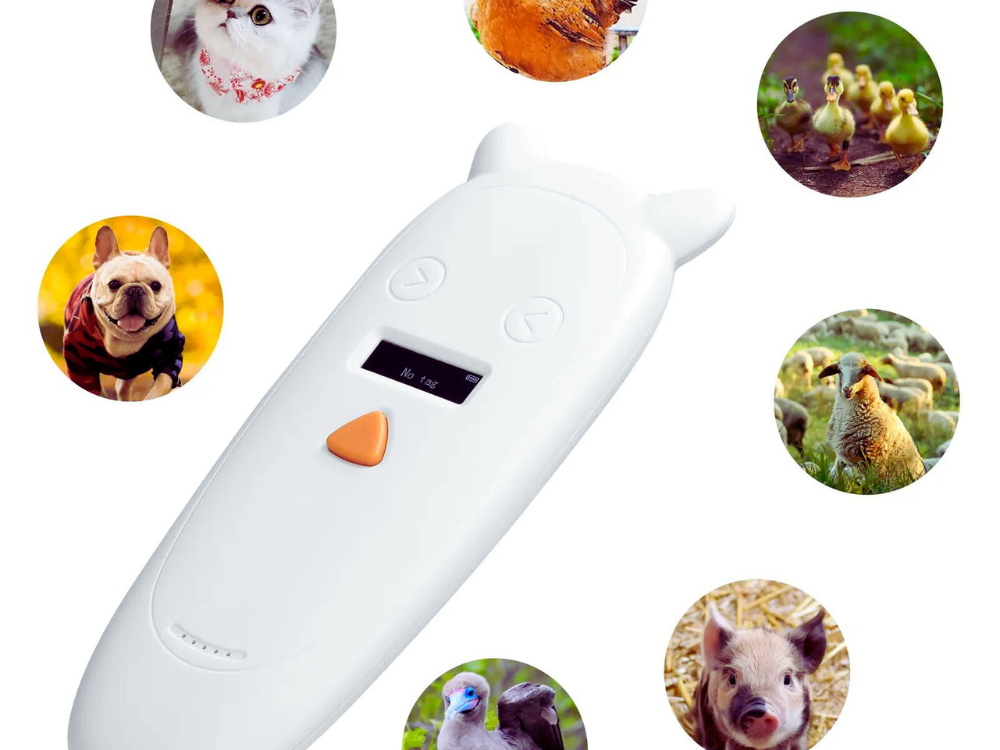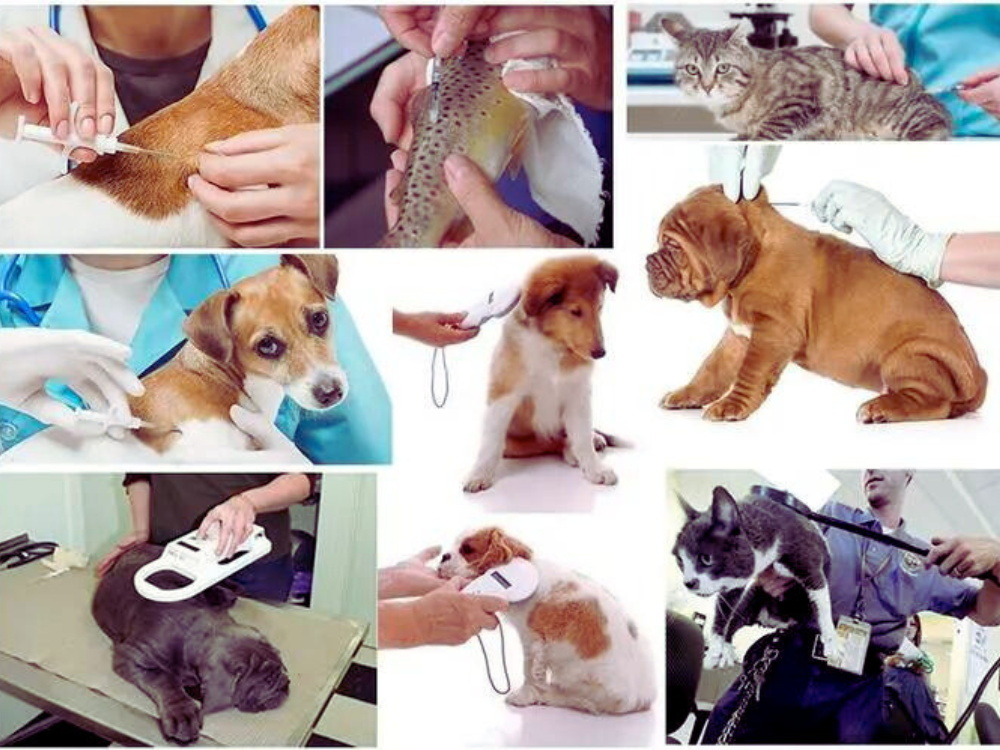
The Role of RFID Technology in Pet Care
Table of Contents
Summary
This article explores how RFID technology is revolutionizing pet care, highlighting its functionalities, benefits, and practical applications.

Introduction to RFID Technology in Pet Care
Radio Frequency Identification (RFID) is a technology that uses electromagnetic fields to automatically identify and track tags attached to objects. In pet care, RFID systems are employed to monitor and manage pets through embedded microchips or RFID tags. This technology offers a range of applications from health monitoring to tracking lost pets, providing a valuable tool for both pet owners and veterinary professionals.
How RFID Technology Functions
RFID systems consist of three main components: the RFID tag, the RFID reader, and the backend system. Each component plays a crucial role in ensuring effective pet management:
- RFID Tag: This small device is implanted in pets or attached to their collars. It contains a unique identifier and may store additional data such as medical history.
- RFID Reader: The reader emits radio waves to communicate with the RFID tag. It captures data transmitted by the tag and sends it to a backend system for processing.
- Backend System: This system receives the data from the RFID reader, processes it, and integrates it into a larger database or management system for analysis and tracking.
RFID Tag Types for Pet Care
RFID tags used in pet care come in various types, each designed to meet specific needs. The following table outlines the primary RFID tag types and their applications in pet care:
Tag Type | Description | Applications |
Passive Tags | These tags do not have a battery and rely on the RFID reader’s signal for power. | Commonly used in pet microchipping for identification. |
Active Tags | Equipped with an internal battery, allowing for longer-range communication. | Used in specialized applications like real-time tracking. |
Semi-Passive Tags | Combine a battery with passive technology, providing extended range and functionality. | Useful for health monitoring devices attached to collars. |
Applications of RFID in Pet Care
RFID technology enhances pet care through various applications, providing benefits in areas such as identification, health monitoring, and safety.
Pet Identification
RFID microchipping is one of the most prevalent applications of RFID technology in pet care. A small RFID chip is implanted under the pet’s skin, containing a unique identification number. This number is registered in a database, which can be accessed by veterinarians or animal shelters to identify lost pets and reunite them with their owners.
Benefits of RFID Microchipping
- Permanent Identification: Unlike collars, microchips are not prone to being lost or removed.
- Quick Retrieval: Scanning a microchip provides immediate access to the pet’s information.
- Enhanced Safety: Helps in recovering lost or stolen pets, reducing the chances of permanent separation.
Health Monitoring
RFID technology can be integrated into pet care systems to monitor and manage pets’ health. RFID-enabled collars or tags can track various health parameters such as activity levels, medication adherence, and vital signs. This data is collected and analyzed to provide insights into the pet’s health status.
Applications in Health Monitoring
- Activity Tracking: Monitors the pet’s daily activity levels, helping to manage obesity or assess exercise needs.
- Medication Tracking: Ensures that pets receive their medications on time and tracks compliance.
- Vital Signs Monitoring: Advanced systems can track parameters like heart rate and temperature, providing early warnings for potential health issues.
Lost Pet Tracking
Active RFID tags equipped with a battery allow for real-time tracking of pets. These tags can be integrated into collars and use GPS technology to provide the pet’s location. In case a pet goes missing, the real-time data helps in locating the pet quickly.
Benefits of Real-Time Tracking
- Immediate Location: Provides real-time updates on the pet’s location.
- Enhanced Recovery Chances: Increases the likelihood of recovering lost pets swiftly.
- Peace of Mind: Offers pet owners reassurance that they can locate their pets at any time.
Choosing RFID Solutions for Pet Care
When selecting RFID solutions for pet care, consider the following factors to ensure optimal performance and suitability:
Tag Type and Functionality
Determine the appropriate RFID tag type based on the specific needs of the pet care application. For identification purposes, passive tags are typically sufficient, while active tags are preferable for real-time tracking.

Integration with Existing Systems
Ensure that the RFID solution integrates seamlessly with existing pet care management systems or databases. Compatibility with veterinary software and tracking platforms is essential for effective data utilization.
Cost and Maintenance
Evaluate the cost of RFID tags and readers, as well as the ongoing maintenance requirements. Consider both initial investment and long-term expenses, including potential upgrades or replacements.
Conclusion
RFID technology offers transformative benefits for pet care, enhancing identification, health monitoring, and tracking capabilities. By incorporating RFID solutions, pet owners and veterinary professionals can improve the management and safety of pets, ensuring better health outcomes and enhanced recovery of lost animals.
For those interested in implementing RFID technology in pet care, consulting with industry experts and evaluating specific needs can provide valuable insights and help in selecting the most suitable solutions.
Comments
Hot Products

What Is RFID Waste Management
Imagine a city where every trash bin speaks — not literally — but through a tiny chip that tells the system when it’s full, when it’s emptied, and where it went. That’s what RFID waste management is doing today.

What are Bolt Seals and their Applications? | Complete Guide
In global trade and logistics, bolt seals play a crucial role in ensuring cargo security and compliance. These small but powerful devices are designed to lock shipping containers, trailers, and cargo doors with a tamper-evident mechanism.

What is an RFID Card Protector? Benefits, Use Cases, and Buying Guide
RFID technology (Radio Frequency Identification) is everywhere: in your credit cards, ID badges, transit passes, hotel room keys, and more. It offers speed and convenience, but it also opens the door to a new kind of digital theft called “skimming.” That’s where an RFID card protector comes in.

RFID Wristbands for Events: Bulk Buying Guide for Organizers
RFID wristbands for events are becoming the go-to solution for organizers who need faster entry, fraud prevention, and cashless payments at concerts, festivals, and sports venues. Unlike paper tickets or QR codes, these smart wristbands use embedded chips to streamline access, secure transactions, and improve the guest experience.

How RFID Tag on Windscreen Improves Vehicle Access Control and Toll Systems
In today’s fast-paced world, vehicle identification needs to be quick, secure, and contactless. An RFID Tag on the Windscreen provides exactly that — a reliable way to manage toll collection, parking, and gated access without stopping vehicles.

The Benefits of RFID Linen Tags in Commercial Laundry
Managing laundry in hospitals, hotels, or large laundry services is a big job. Each day, thousands of sheets, towels, and uniforms are washed, sorted, and sent back out. But problems like lost linens, sorting mistakes, and manual counting can cost companies a lot of money. For example, mid-sized hotels can lose over $200,000 each year from missing linens.
That’s where RFID Linen Tags come in.
Tags
RELATED BLOGS

What Is RFID Waste Management
Imagine a city where every trash bin speaks — not literally — but through a tiny chip that tells the system when it’s full, when it’s emptied, and where it went. That’s what RFID waste management is doing today.

What are Bolt Seals and their Applications? | Complete Guide
In global trade and logistics, bolt seals play a crucial role in ensuring cargo security and compliance. These small but powerful devices are designed to lock shipping containers, trailers, and cargo doors with a tamper-evident mechanism.

What is an RFID Card Protector? Benefits, Use Cases, and Buying Guide
RFID technology (Radio Frequency Identification) is everywhere: in your credit cards, ID badges, transit passes, hotel room keys, and more. It offers speed and convenience, but it also opens the door to a new kind of digital theft called “skimming.” That’s where an RFID card protector comes in.




